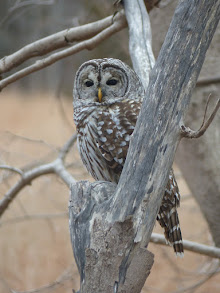Tuesday, April 28, 2015
Odd, off, oft, old.
The artist and printmaker Annie Bissett has discovered this wonderful bit of found poetry, which she has posted on her Tumblr blog. Adapted from Thomas Dilworth's A New Guide to the English Tongue, an oft-reprinted 18th-century schoolbook, it reproduces part of a table of "Words of Three Letters, viz. One Vowel and two Consonants."
Although it may not be immediately apparent, there is a logical order to the table. It is alphabetized first by last letter, then by central vowel, and finally by first letter. The first word in the table (which actually begins at the bottom of the unshown preceding page) is Dab, and it is followed by Web. Bib fib nib rib. and so on until it reaches Box sox. It then begins again with words that don't fit the consonant-vowel-consonant spelling pattern: The. Who. Cry dry fly etc. (although Two., in the second paragraph, would seem to belong further down). The words in parentheses appear to be ones whose vowel is pronounced differently from those of the rest of their respective groups. The book uses the old-style ſ for initial s.
But knowing how the table is constructed is much less fun than simply reading it (especially aloud), enjoying the music of English speech sounds, and reflecting on the strangeness of human language. It may remind us that these everyday words, the essential building blocks of English, are, in the end, just arbitrary signs, ones that would mean nothing, or perhaps different things, to someone who knew nothing of the language.
Labels:
Languages,
Printmaking
Sunday, April 19, 2015
Spring list
I've been too busy of late to write anything substantial but not, happily, too busy to read. These three books have very little in common other than the fact that they were published either this year or last, and that I liked them enough to buy a copy. I've reached a point where adding to my library isn't always advisable, if only in terms of shelf space, and so I've been trying to rely on the public library system for run-of-the-mill reading matter (electronic books not being to my taste). These books are exceptions.
Helen Macdonald's H is for Hawk is a beautifully written book about training a goshawk named Mabel, about coping with grief, and also about the writer T. H. White, who is best known for his Arthurian fiction but who also composed an account of his own ill-fated attempt to raise a similar hawk. Macdonald's book has been a surprise bestseller both in her native UK, where it was released last year by Jonathan Cape, and now in the US, where it is published by Grove Press, and it has won several awards. For once, all the attention is amply justified; Macdonald is a fine writer, able to deftly capture both her hawk's flights around the English countryside and her own emotional turmoil. Inevitably, there is a movie deal, but although H is for Hawk might make a fine film, nothing, I suspect, can substitute for the pleasures and integrity of Macdonald's prose.
Terhi Ekebom's Logbook, on the other hand, has almost no prose at all. It's a tiny illustrated chapbook published in Latvia (though what text there is is in English). Grief is also the subject here, although the details are as mysterious as the atmosphere. Two women — it's hard to say if they are adolescents or adults — inhabit a house in the middle of the sea where they tend to a bedridden male figure who is menaced by an expanding darkness. Their only temporary defense against its spread are the light-releasing spheres of a marine plant that float up to the surface. Logbook is available from kuš! komiksi for $6 including postage worldwide.
Finally, for some time I've been following Tom Miller's excellent blog Daytonian in Manhattan, which is dedicated to the architecture and histories of Manhattan buildings and monuments, but I've had to admit to some frustration because there was simply too much of interest there to comfortably digest online. Fortunately, a selection of entries has been published in a reader-friendly and nicely illustrated compact format by Universe (Rizzoli) in the US and Pimpernel Press in the UK. Though the book includes a few internationally renowned buildings (the Flatiron Building, St. Patrick's Cathedral), most of the structures it covers, like the Village's Pepperpot Inn and the melancholy General Slocum Memorial Fountain, are easily overlooked, and Miller's enthusiastic dedication to their stories is admirable. Let's hope there will be sequels to come.
Labels:
Architecture,
Chapbooks
Subscribe to:
Posts (Atom)






